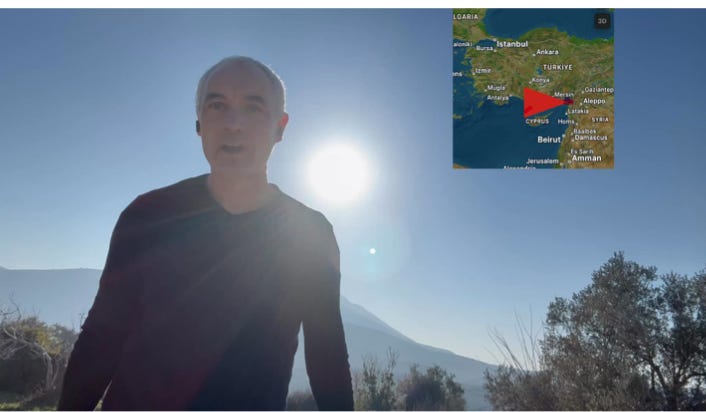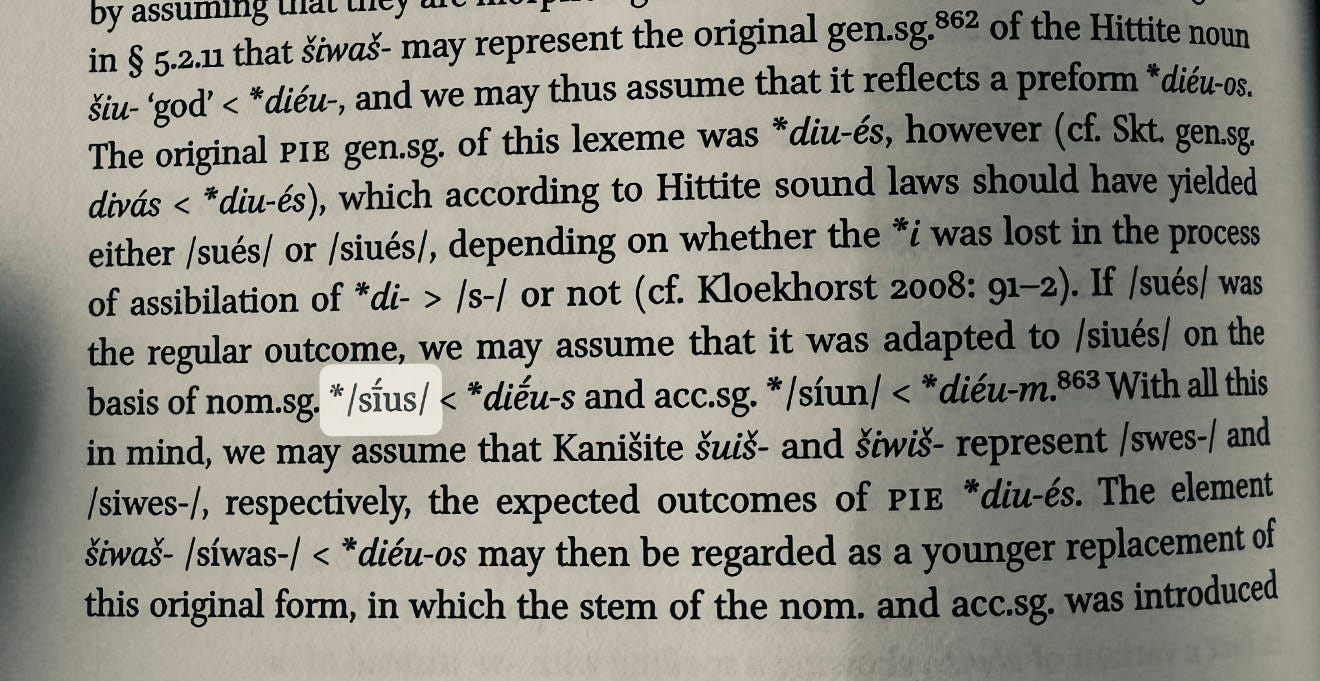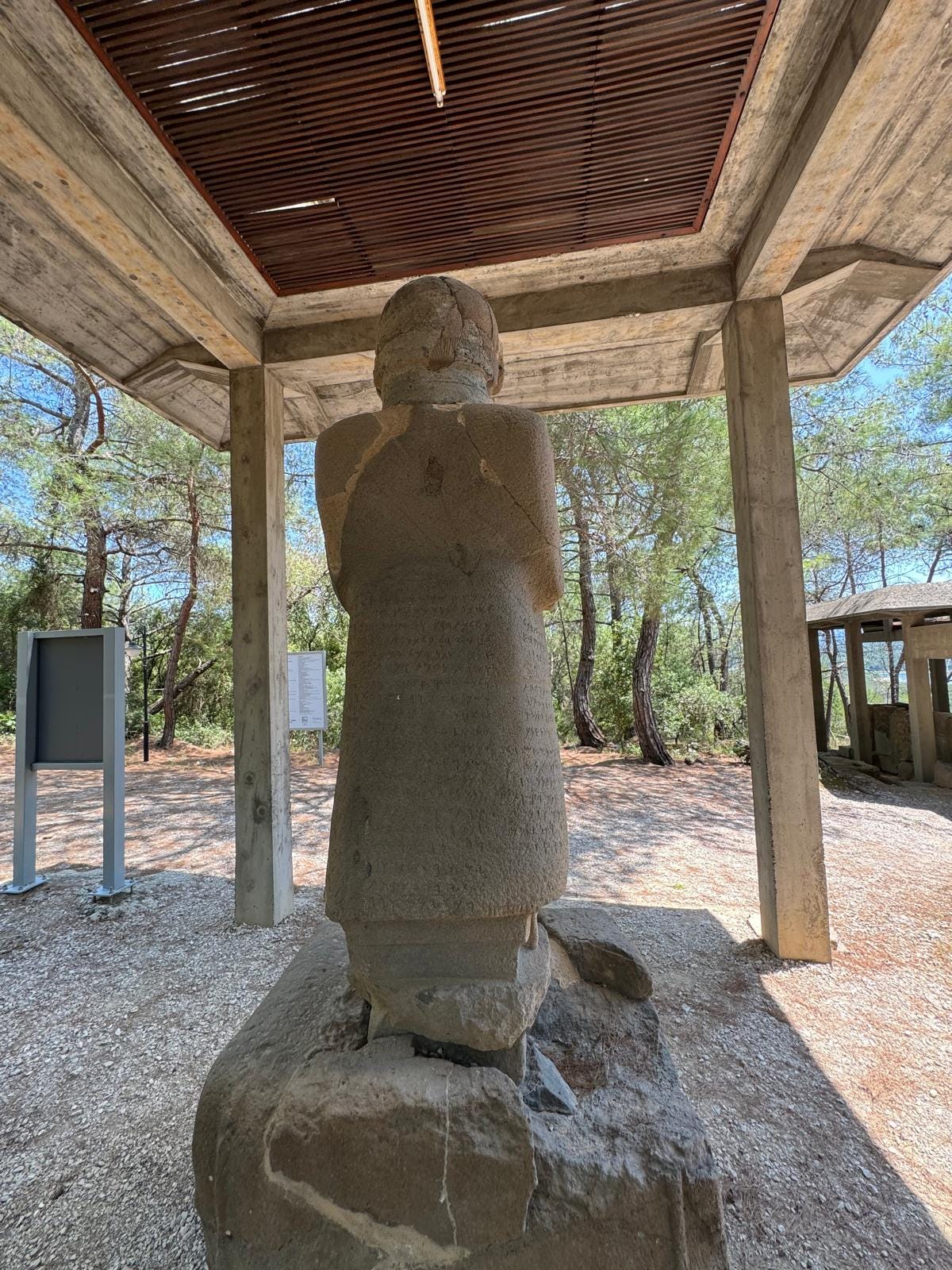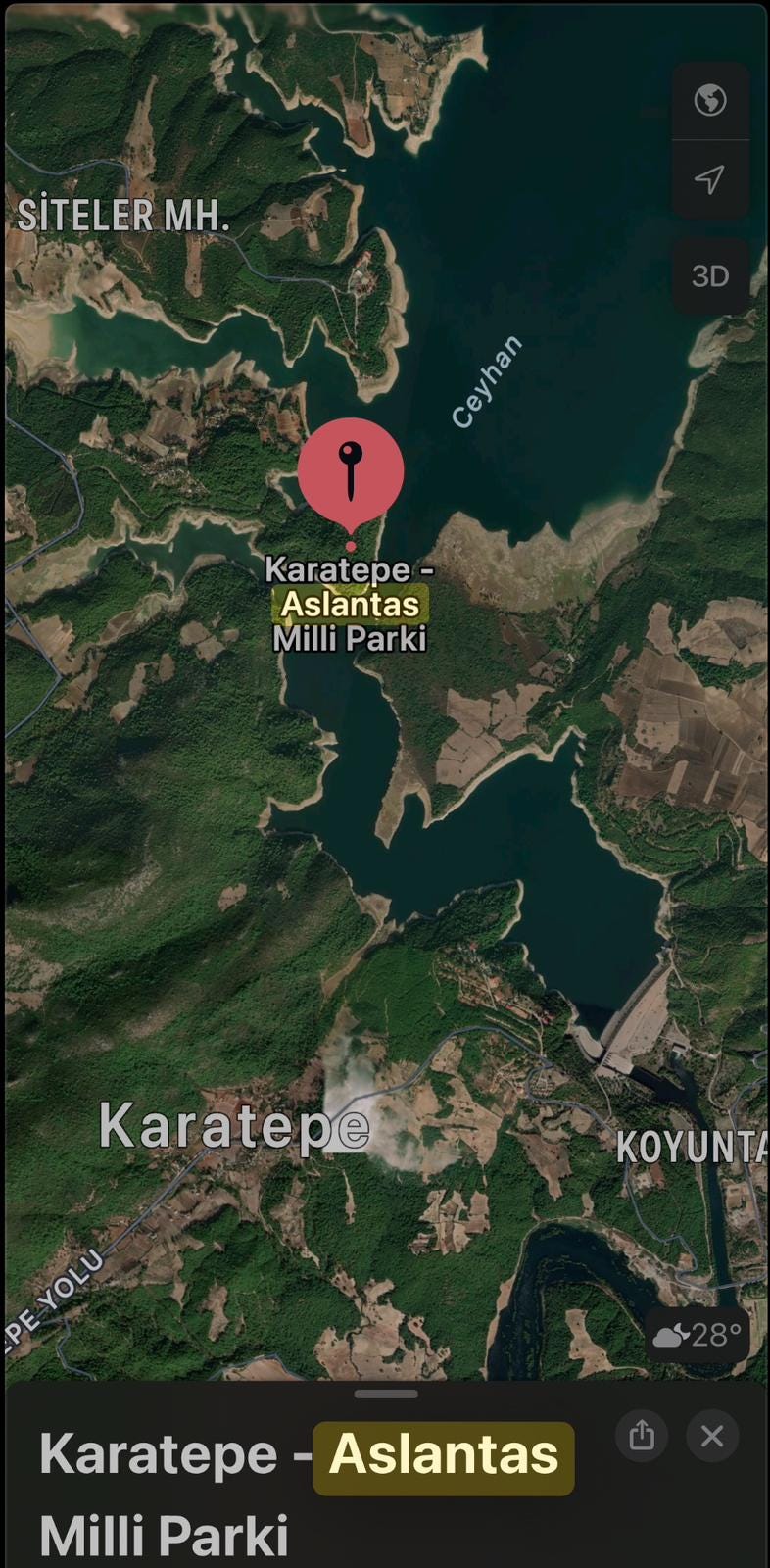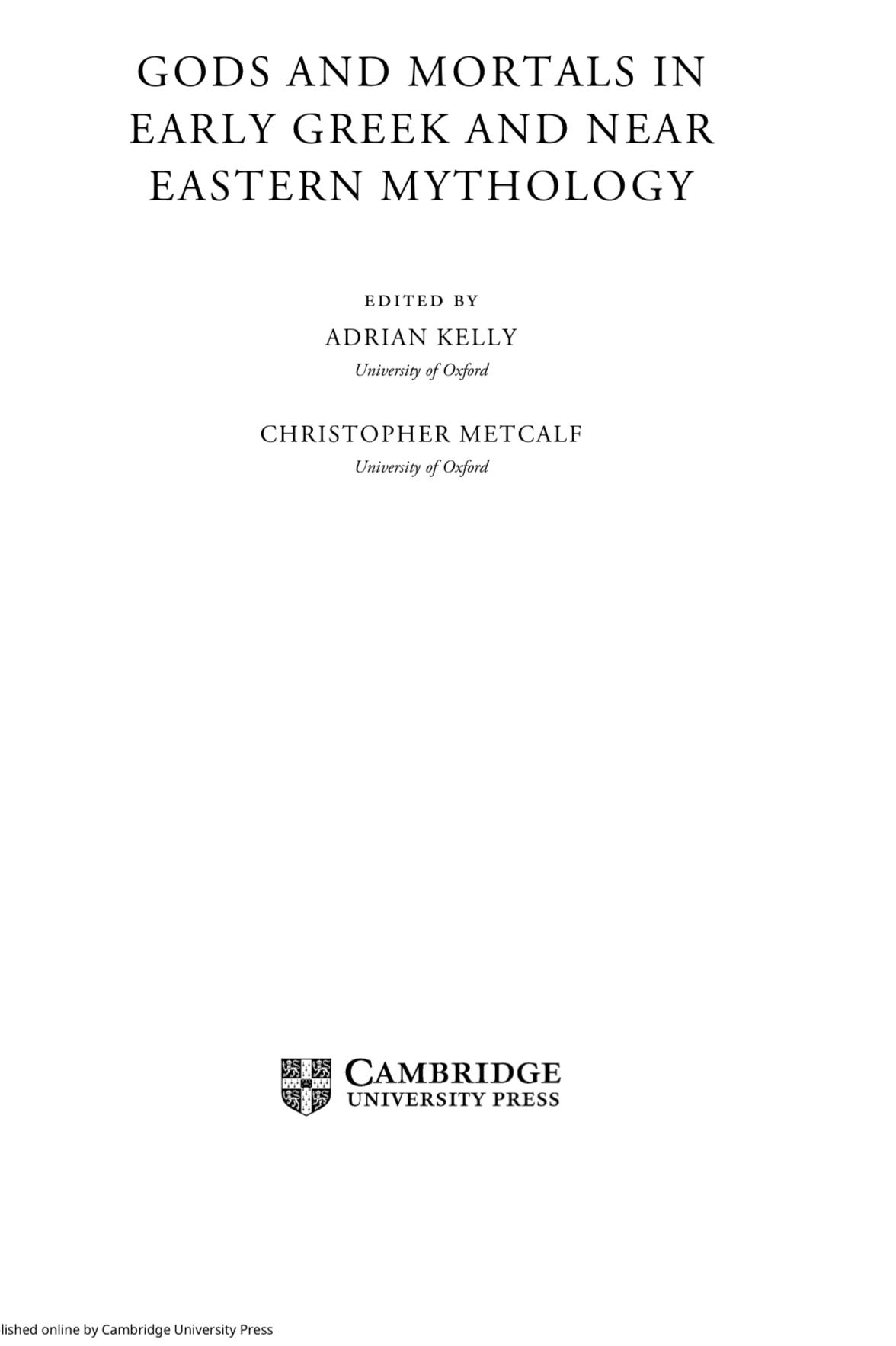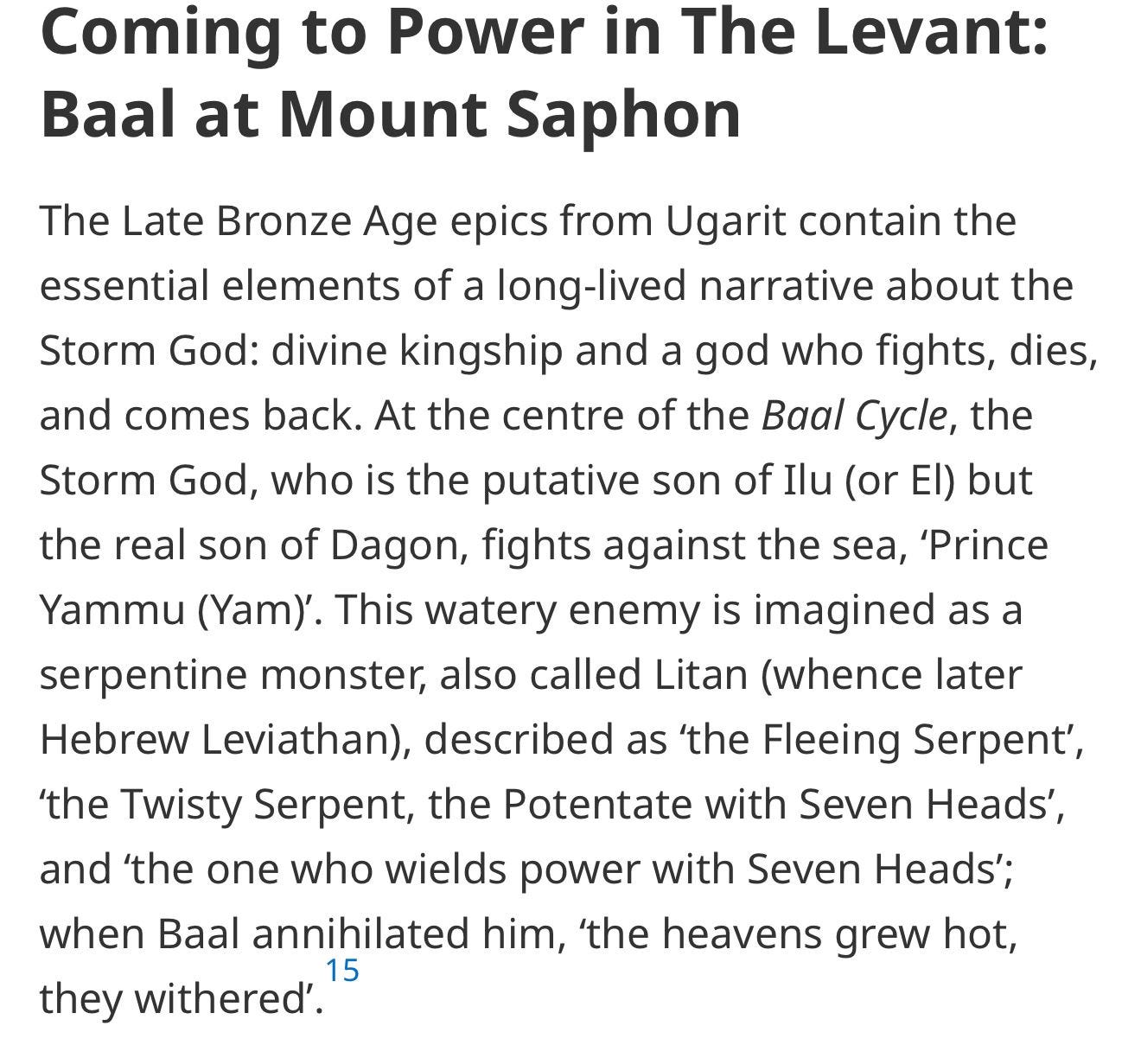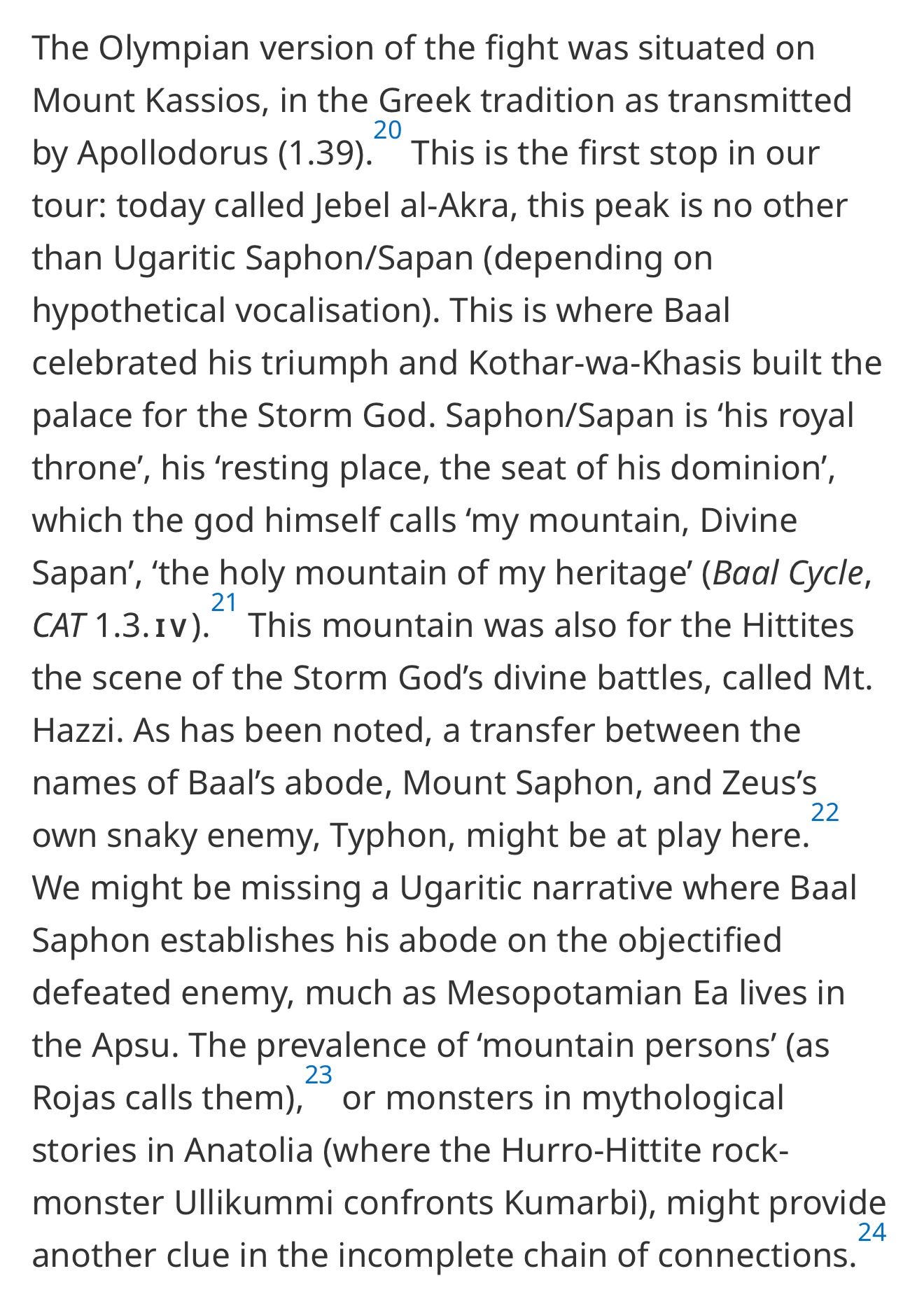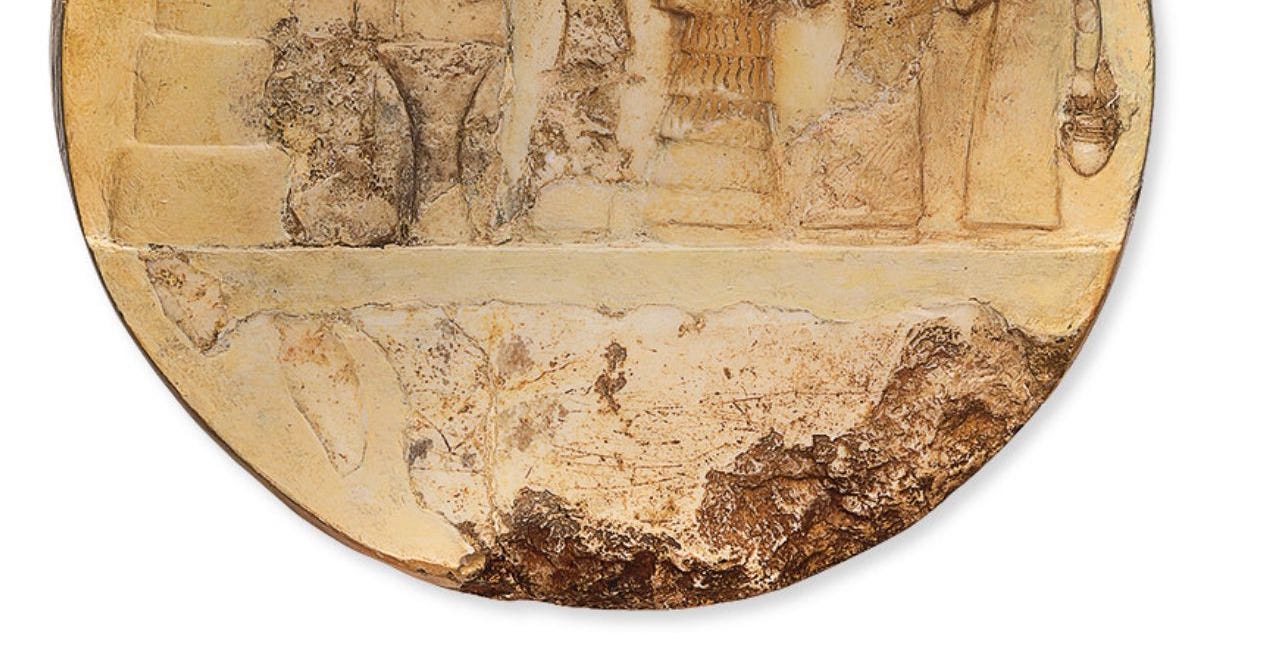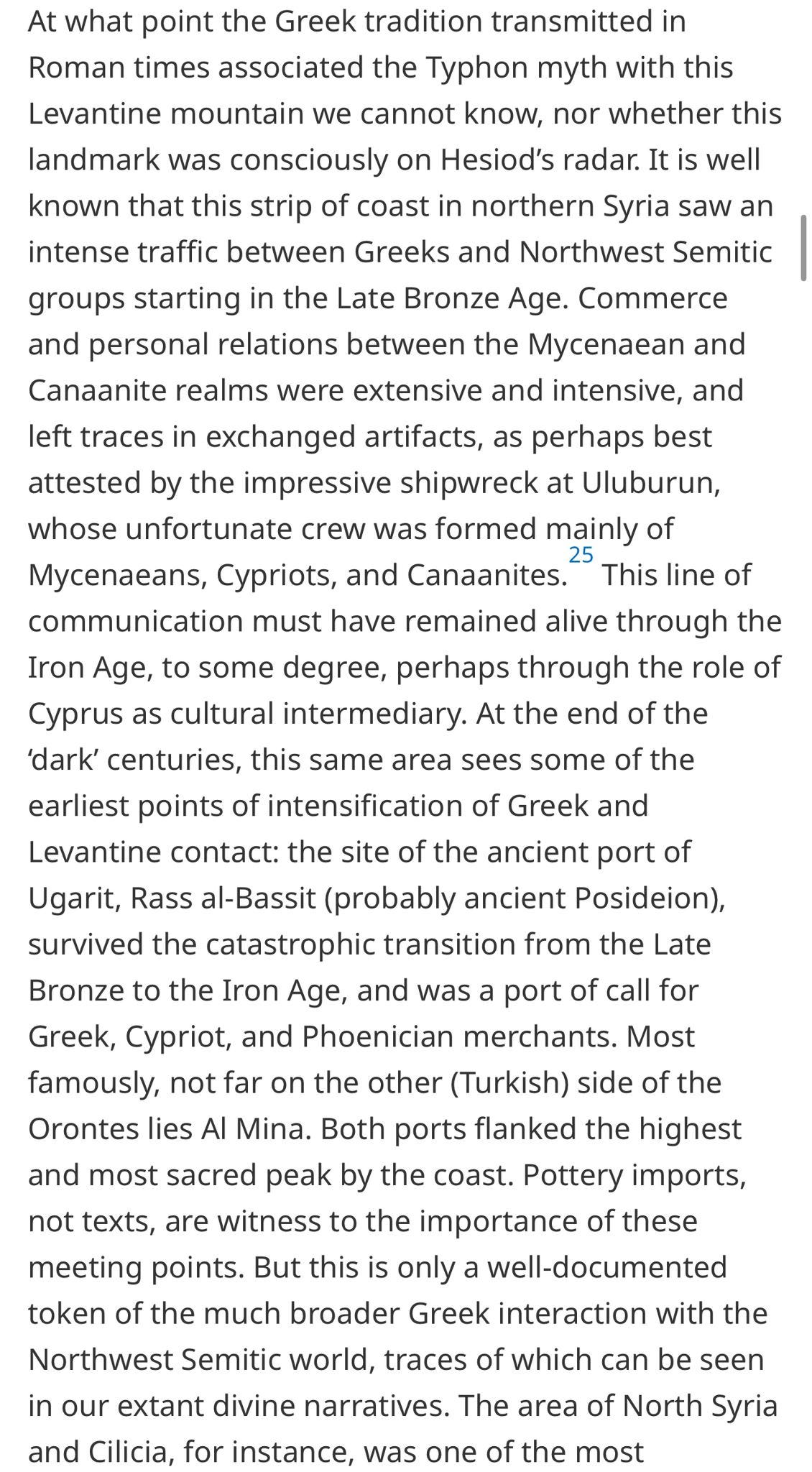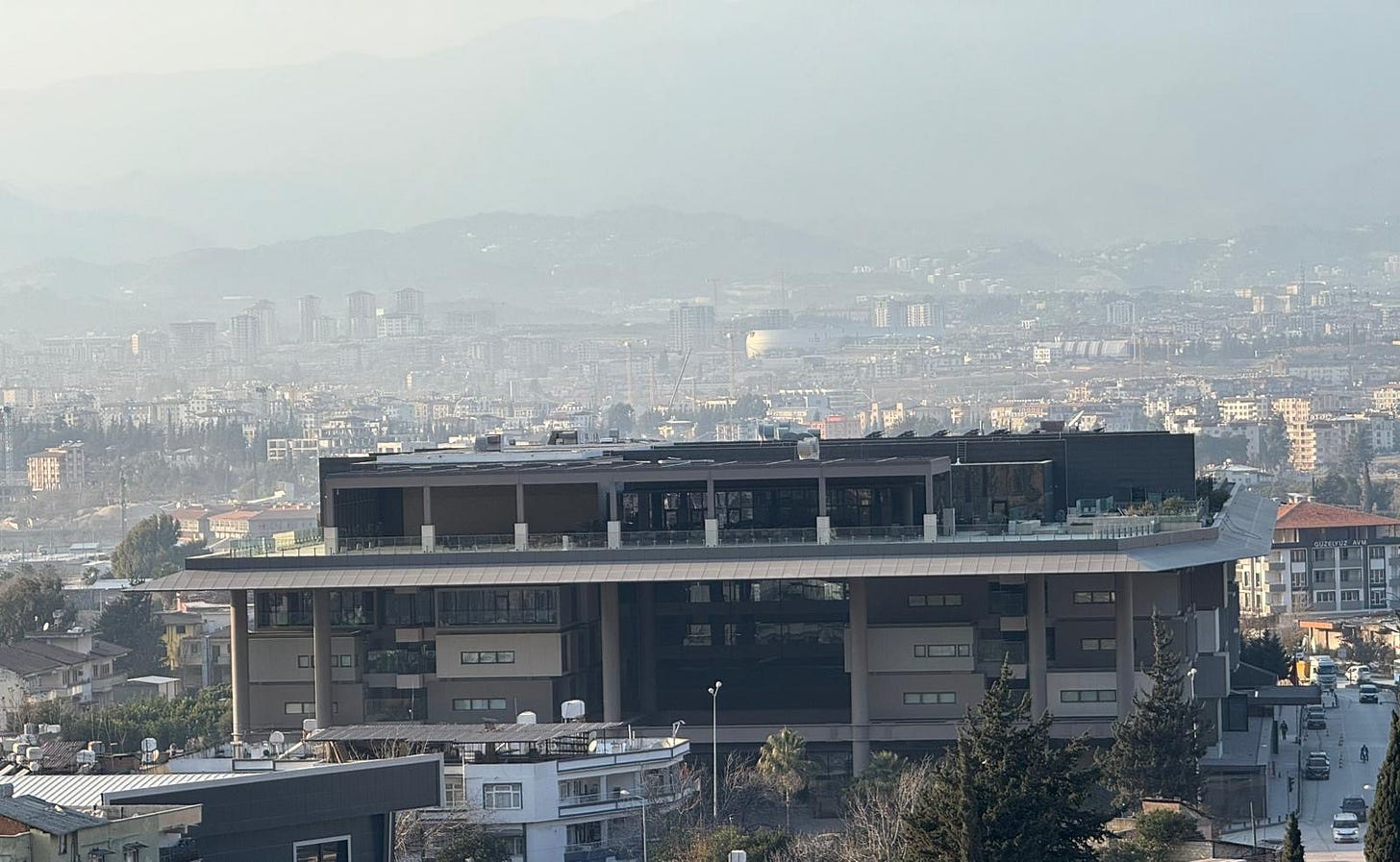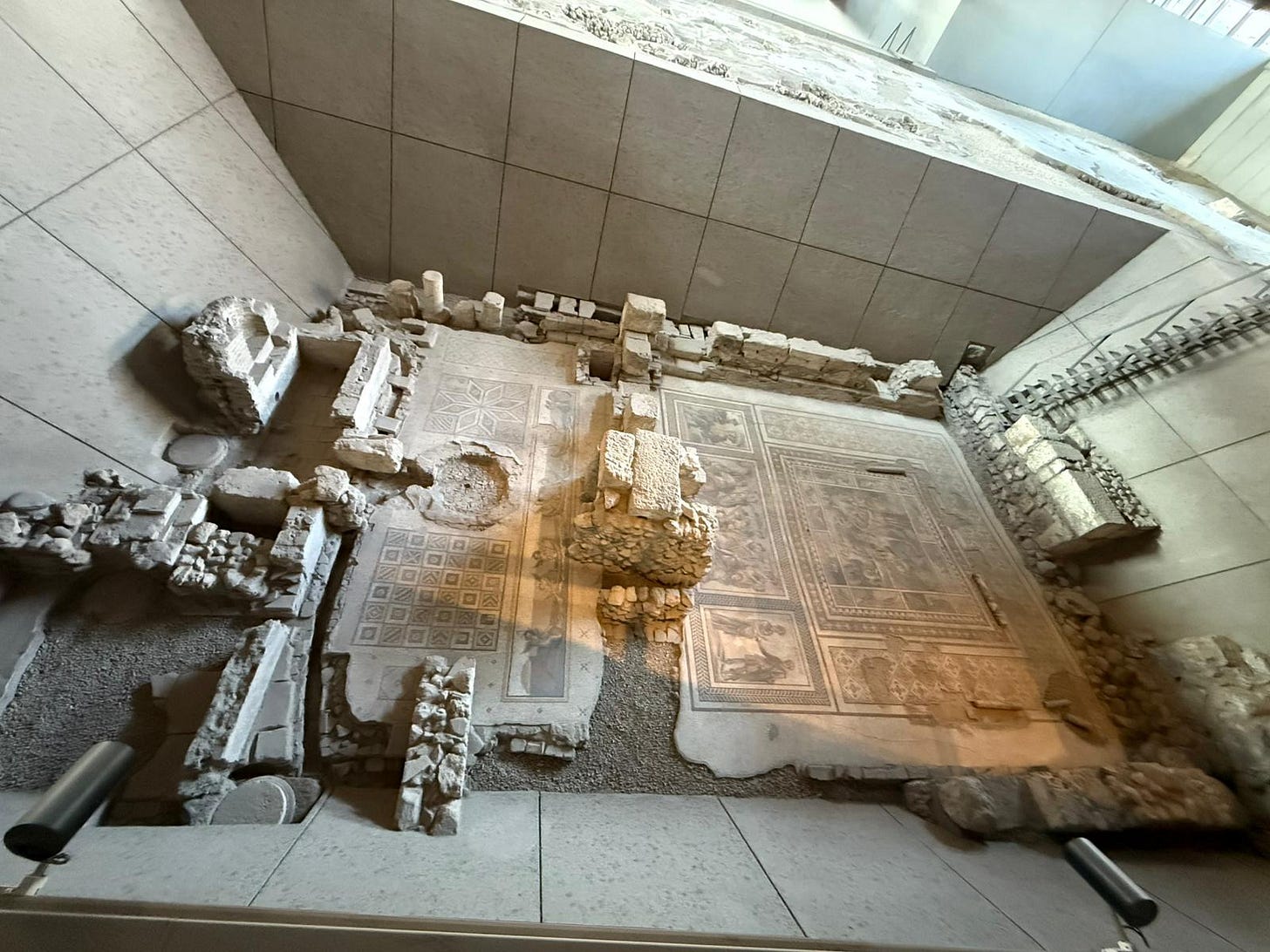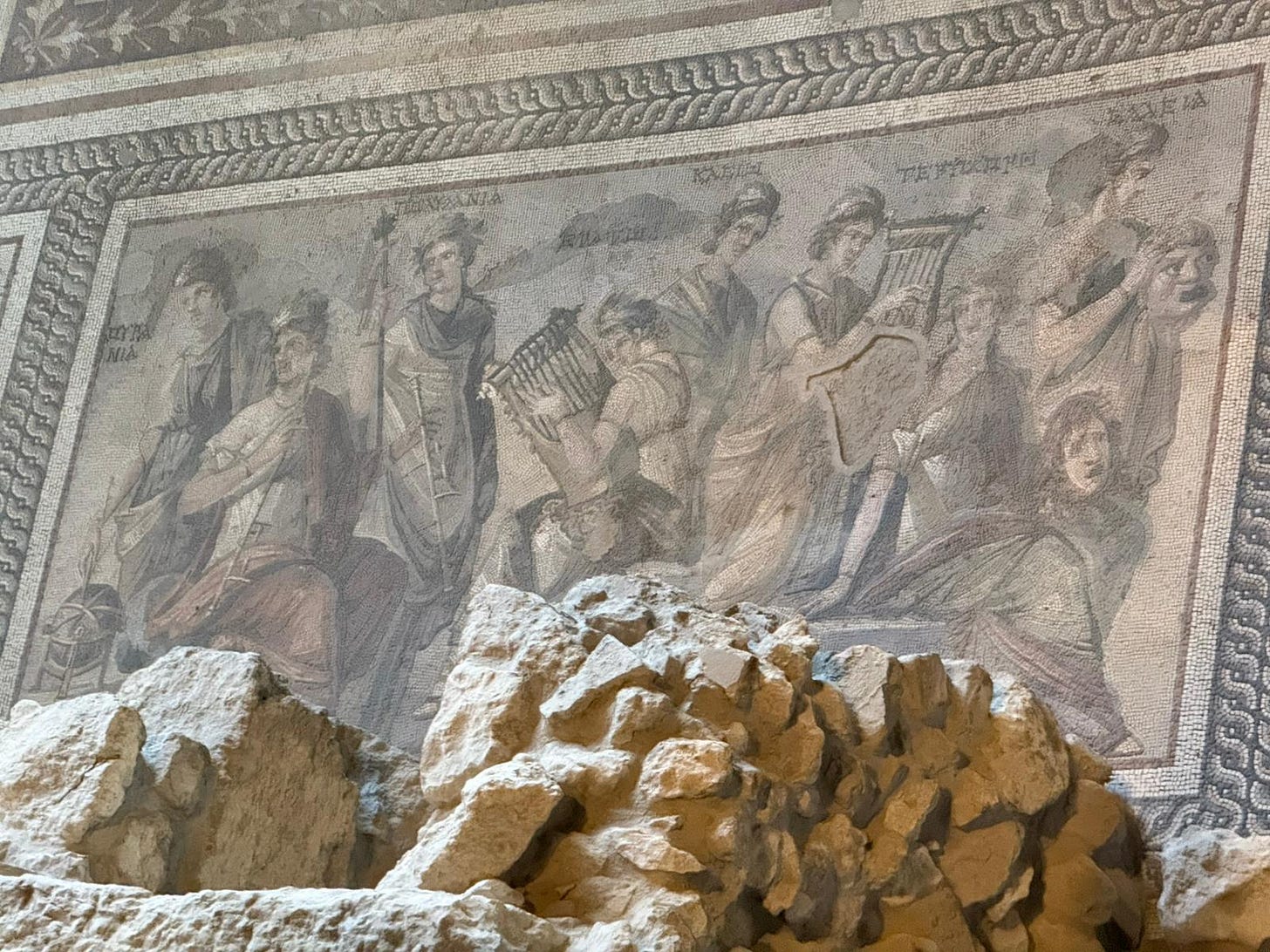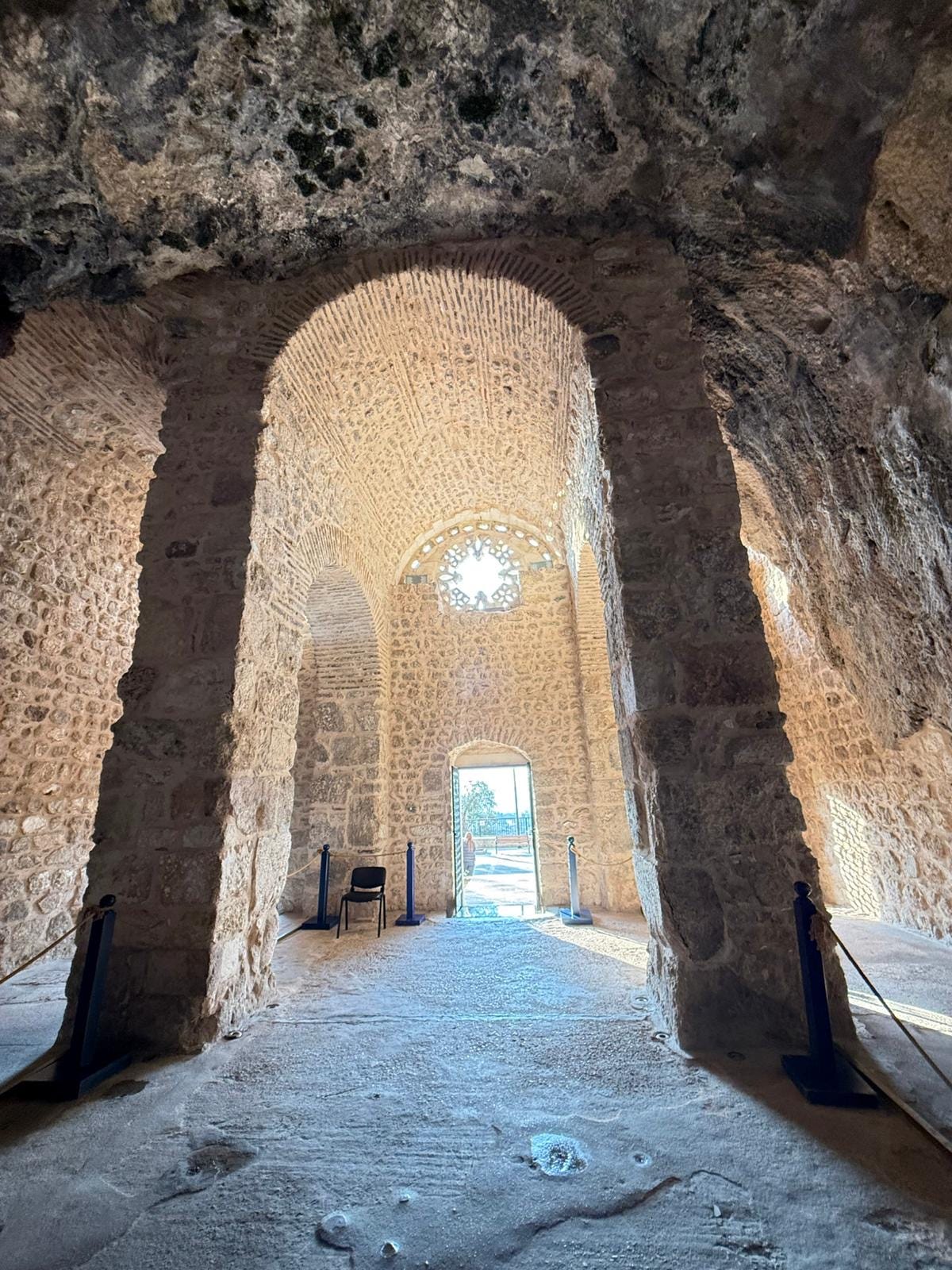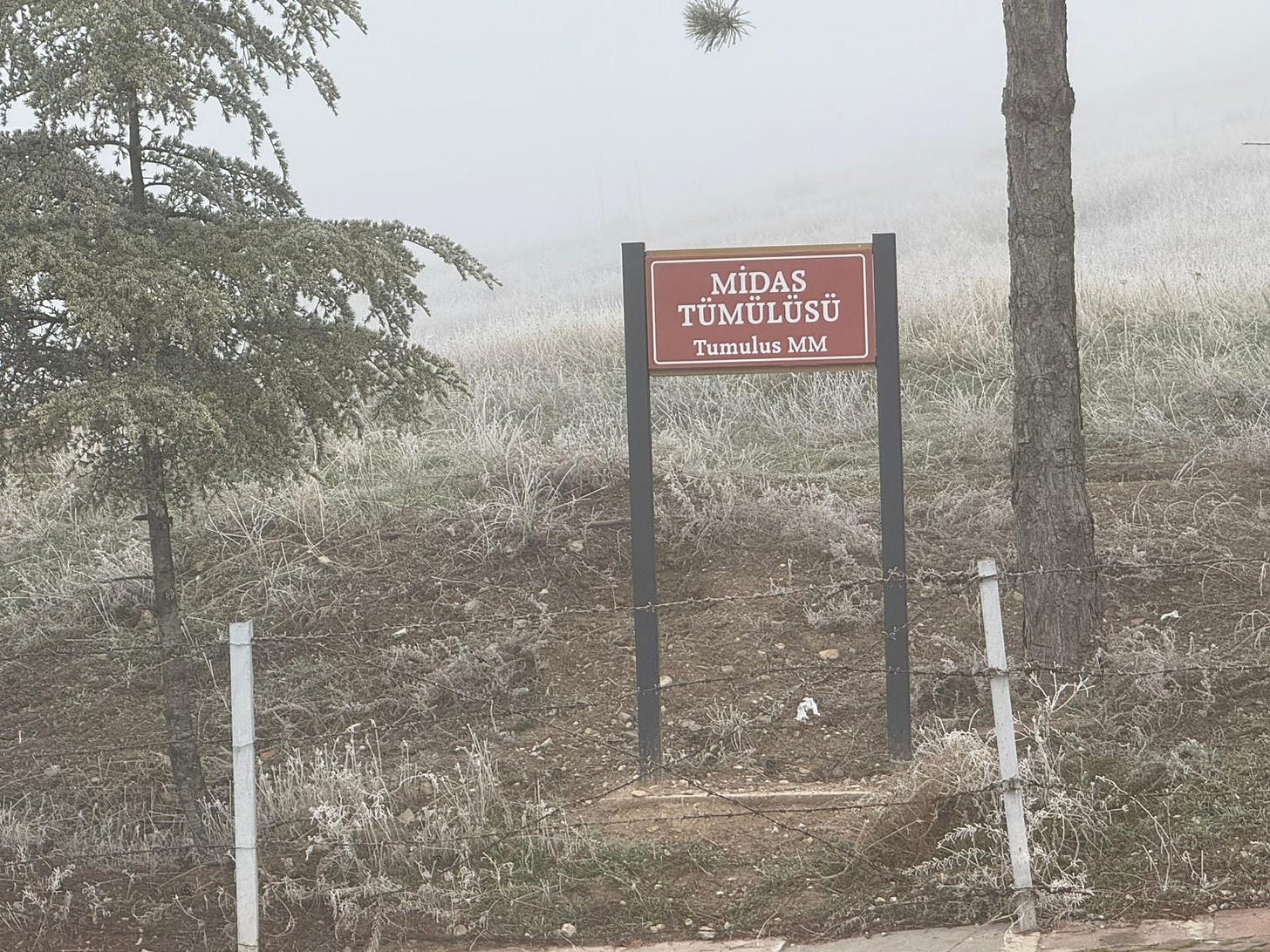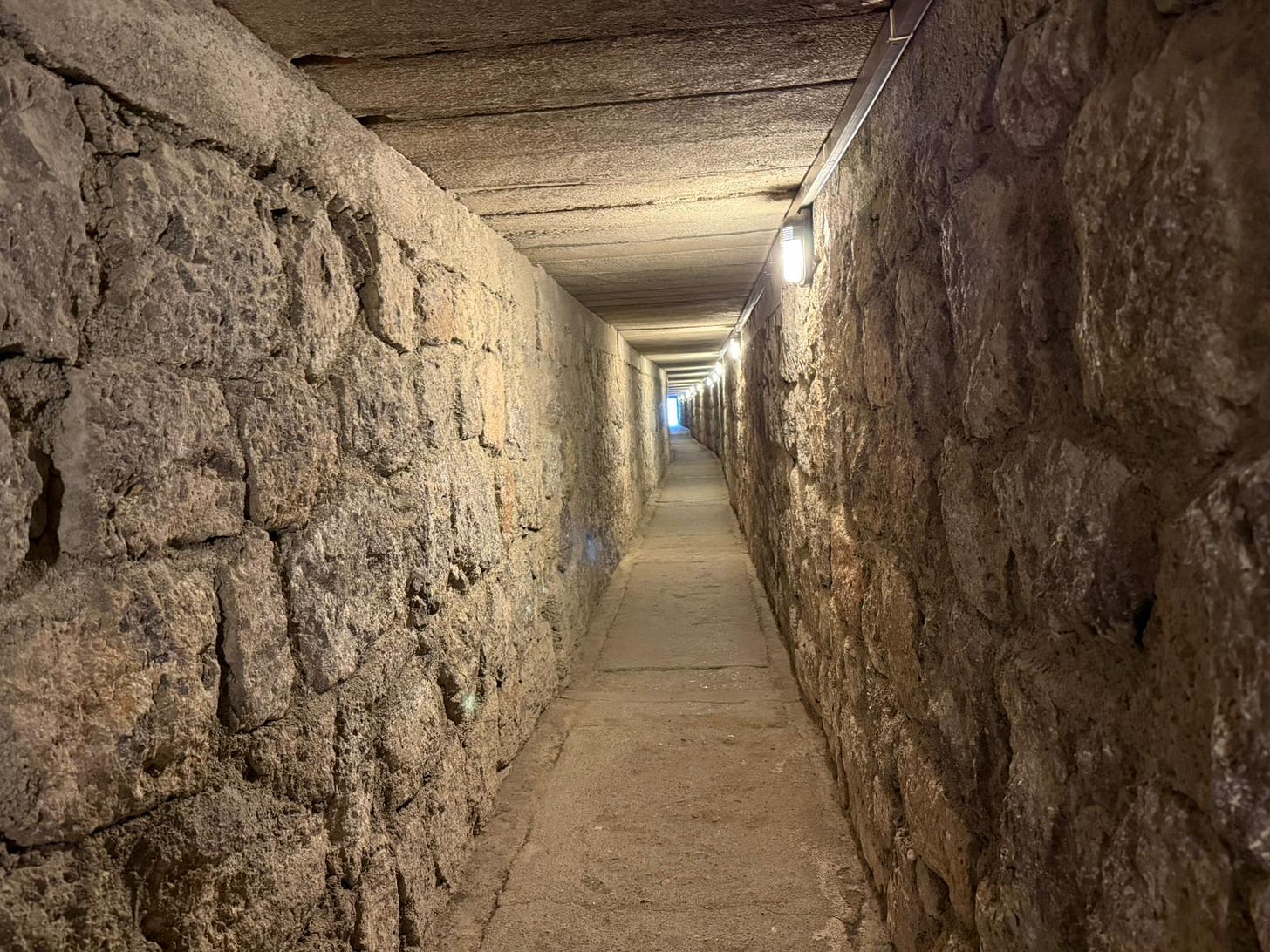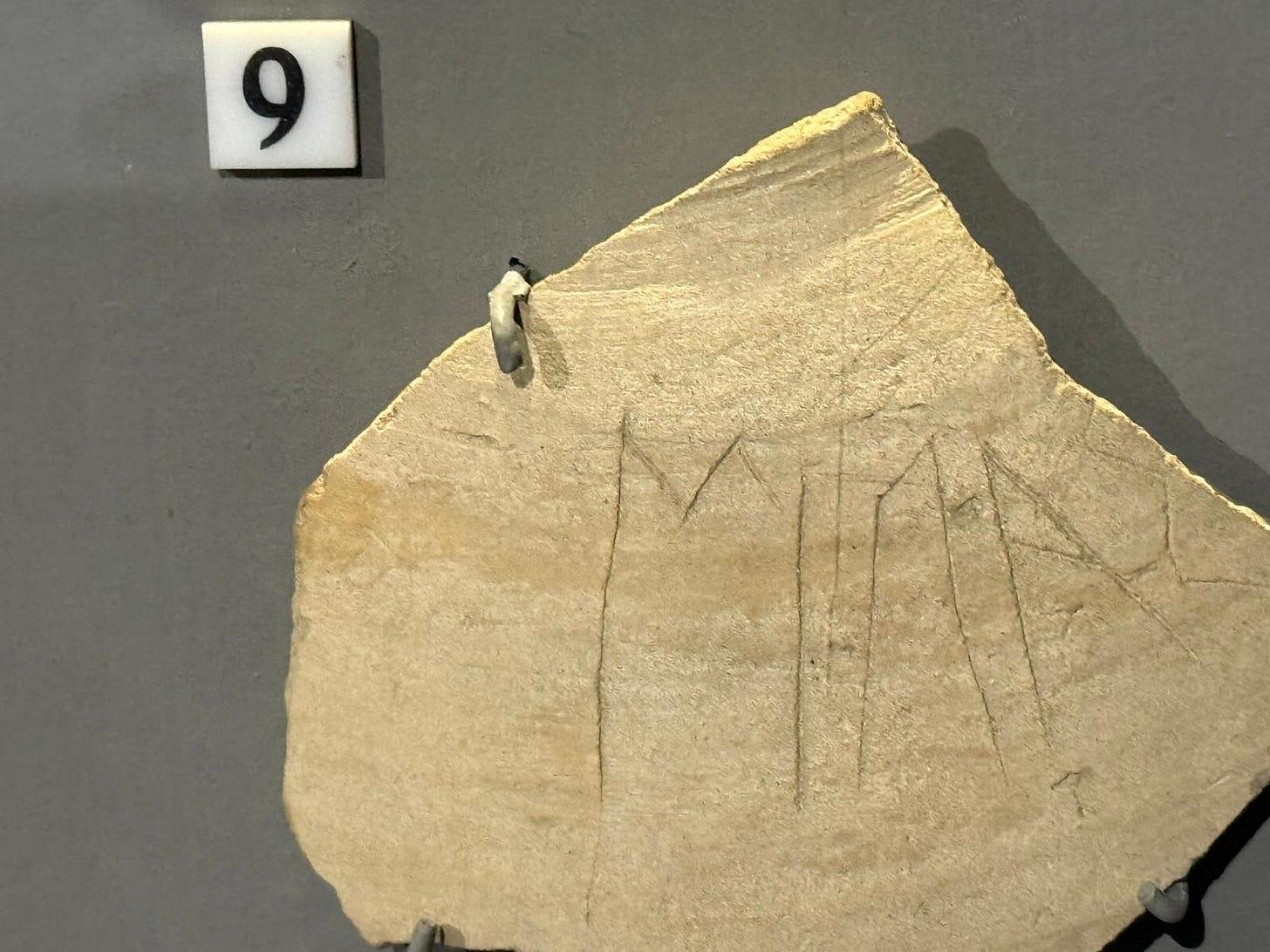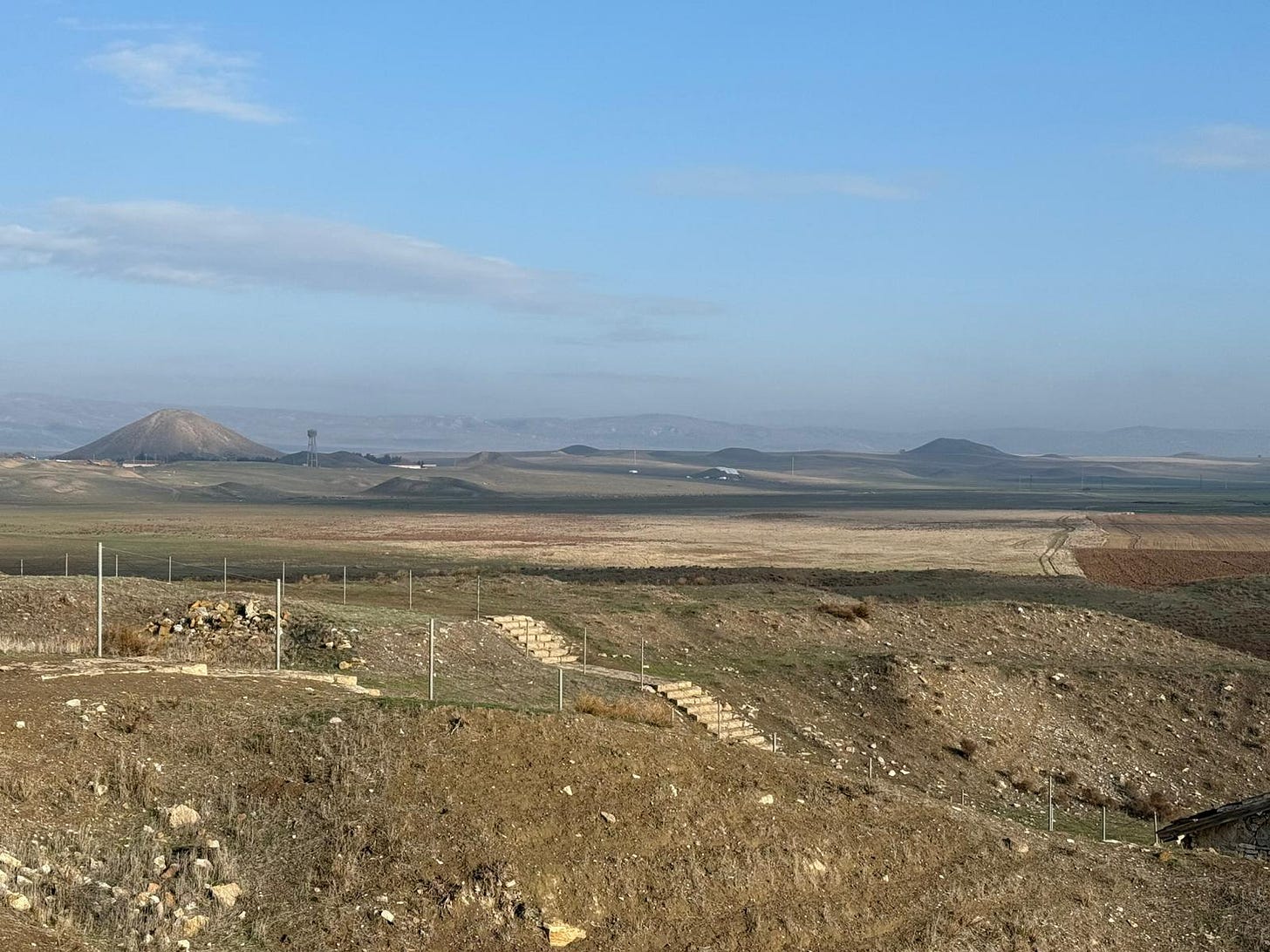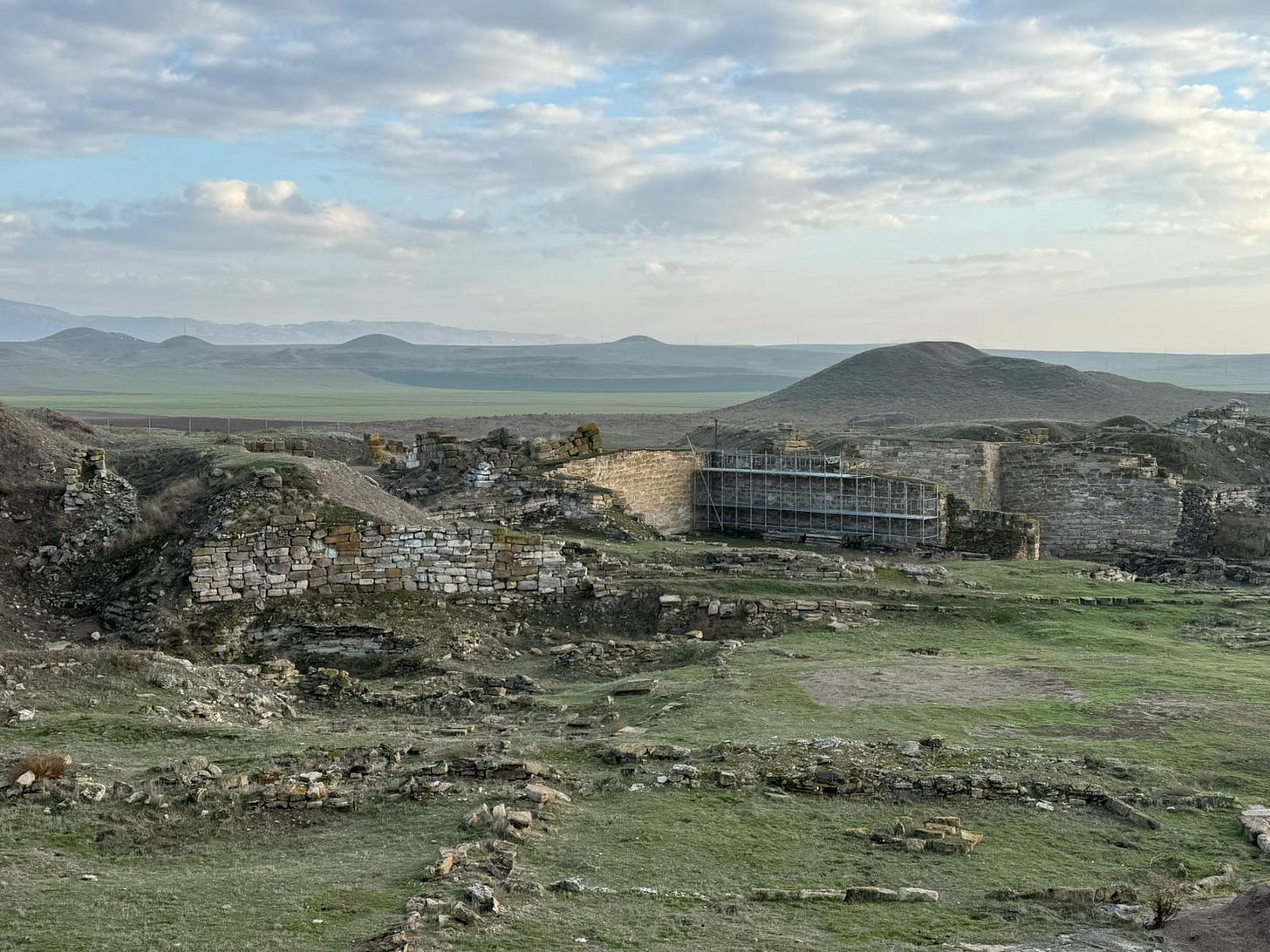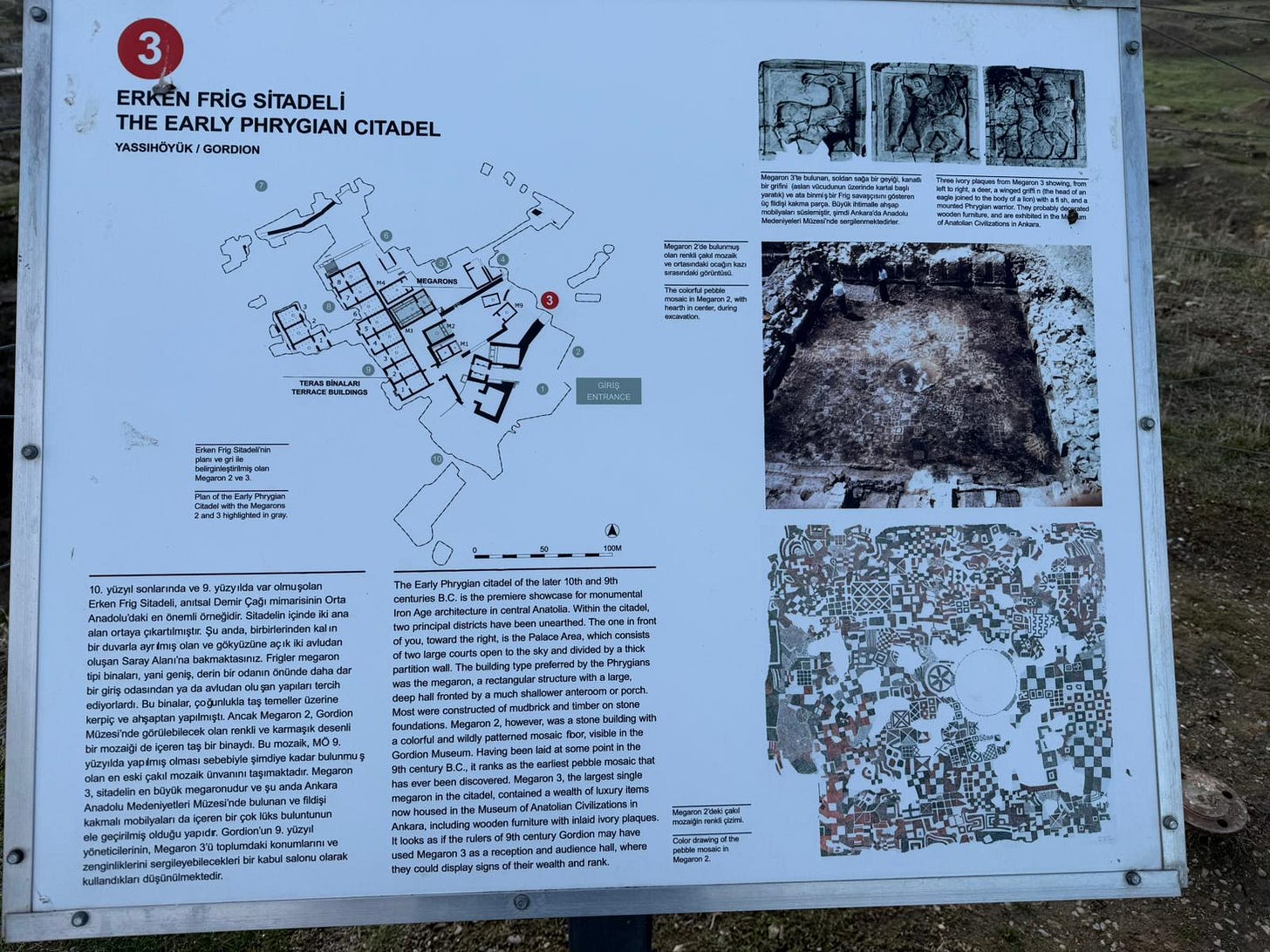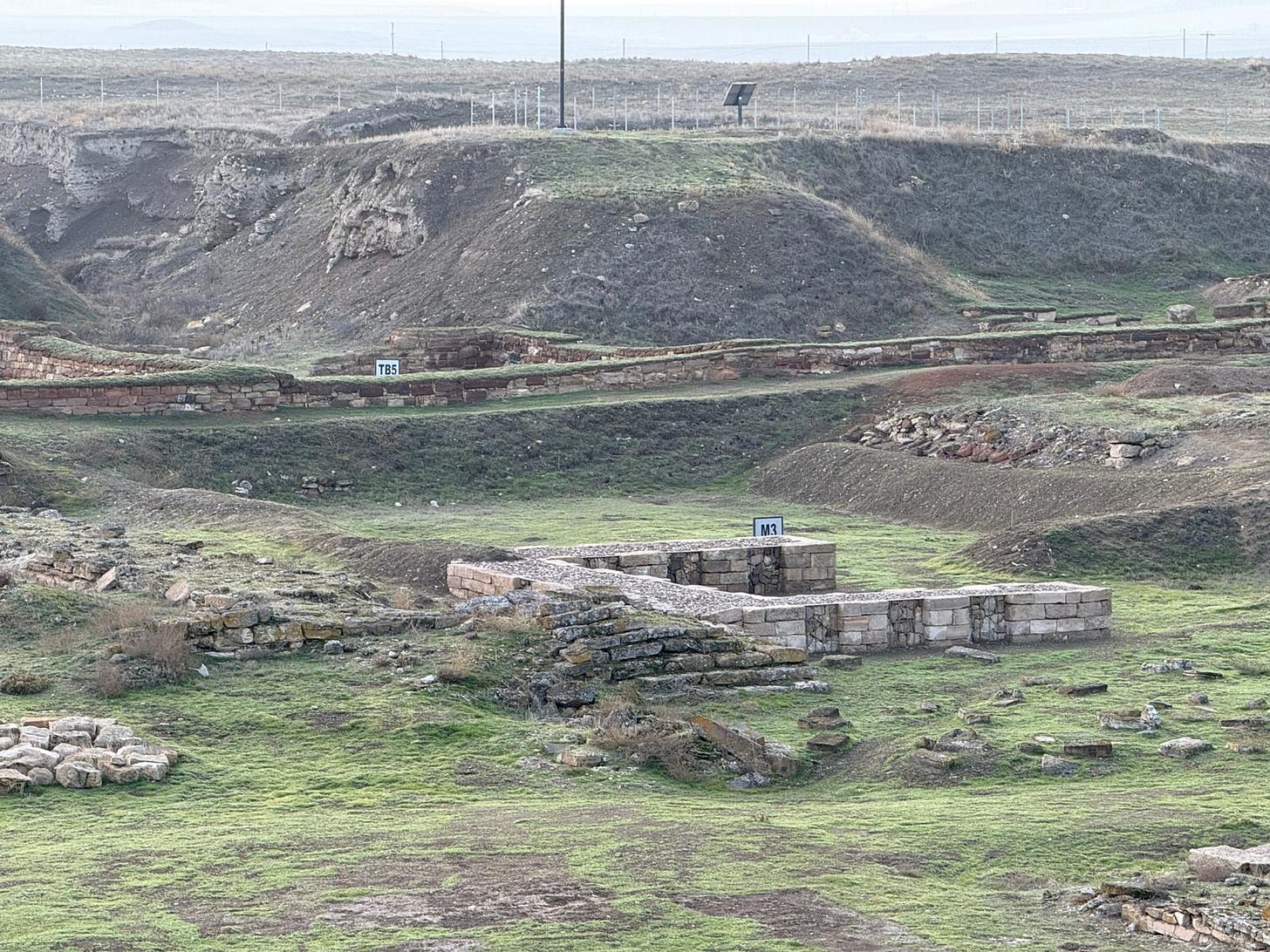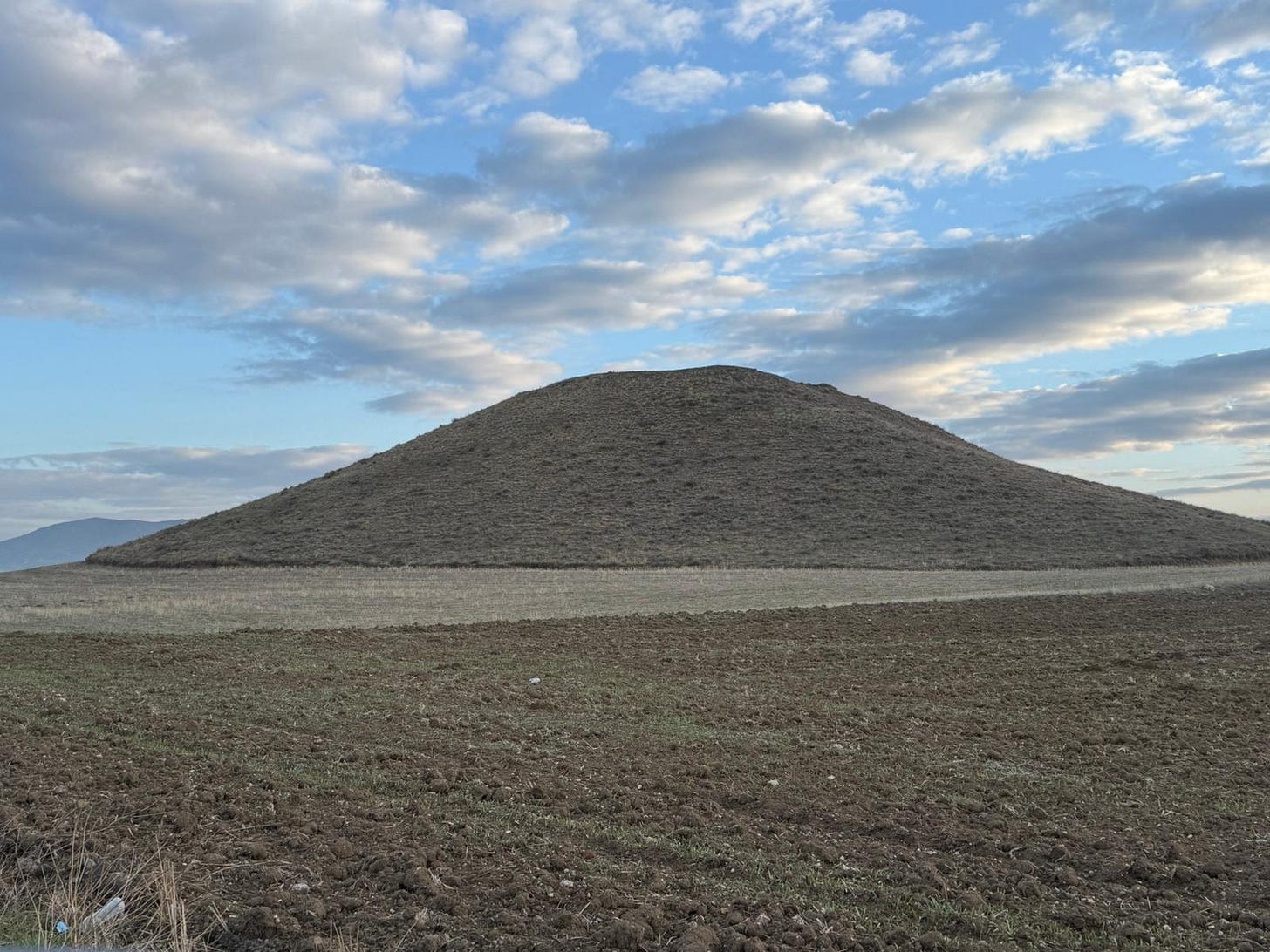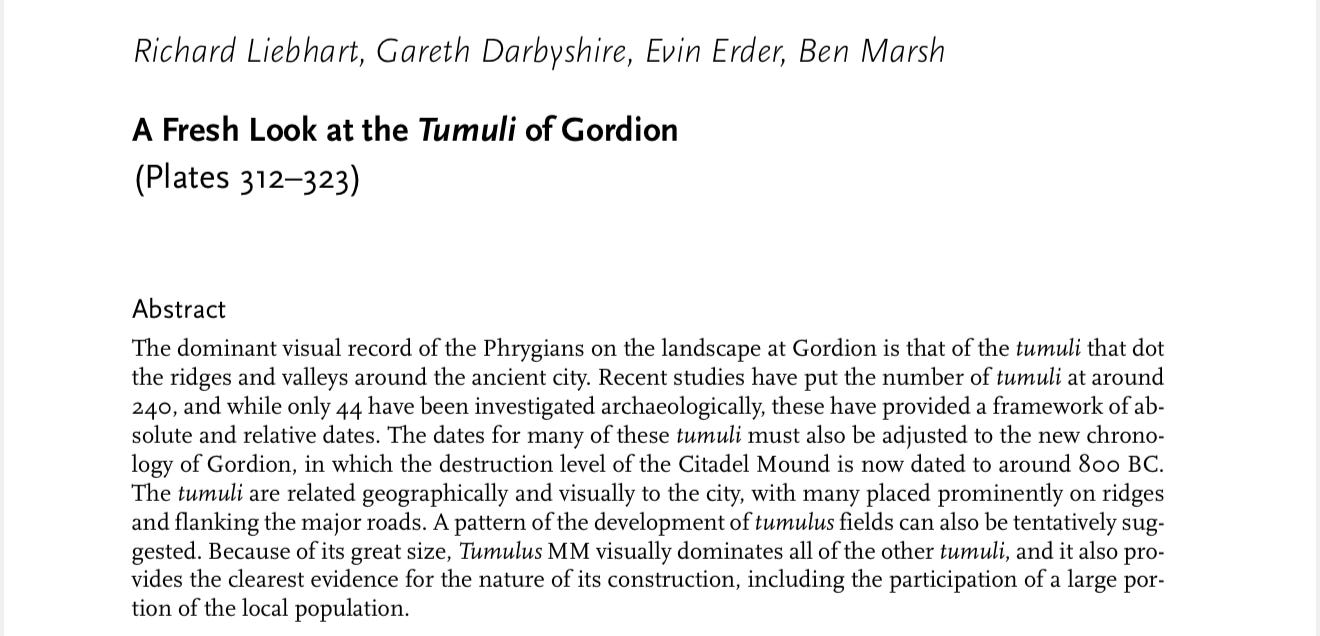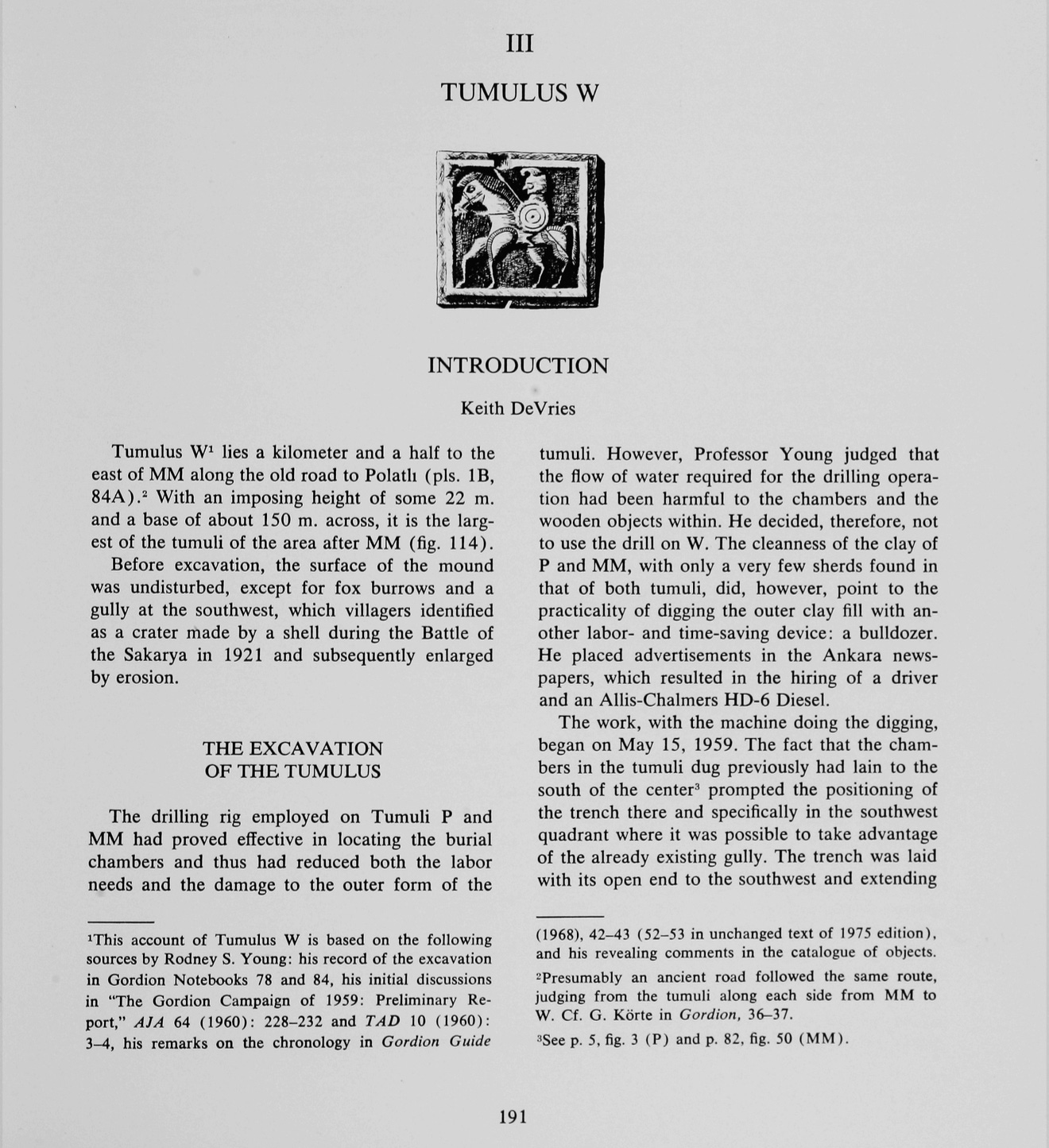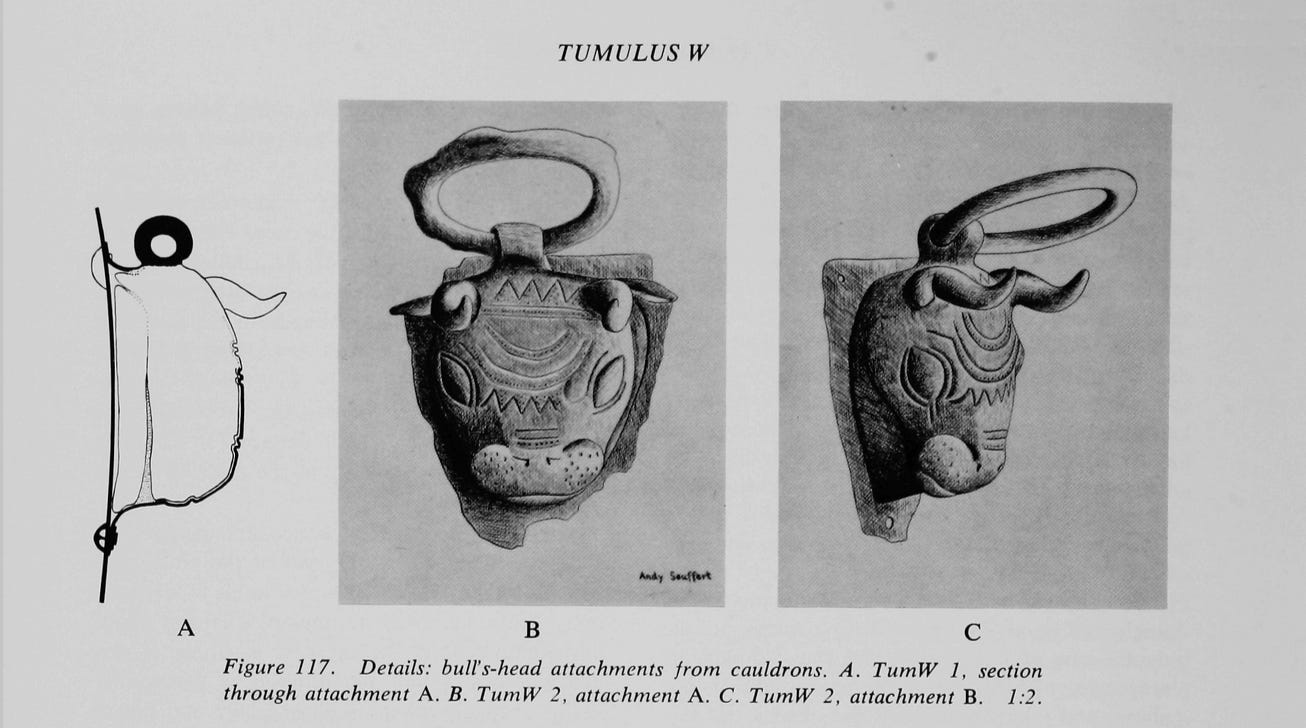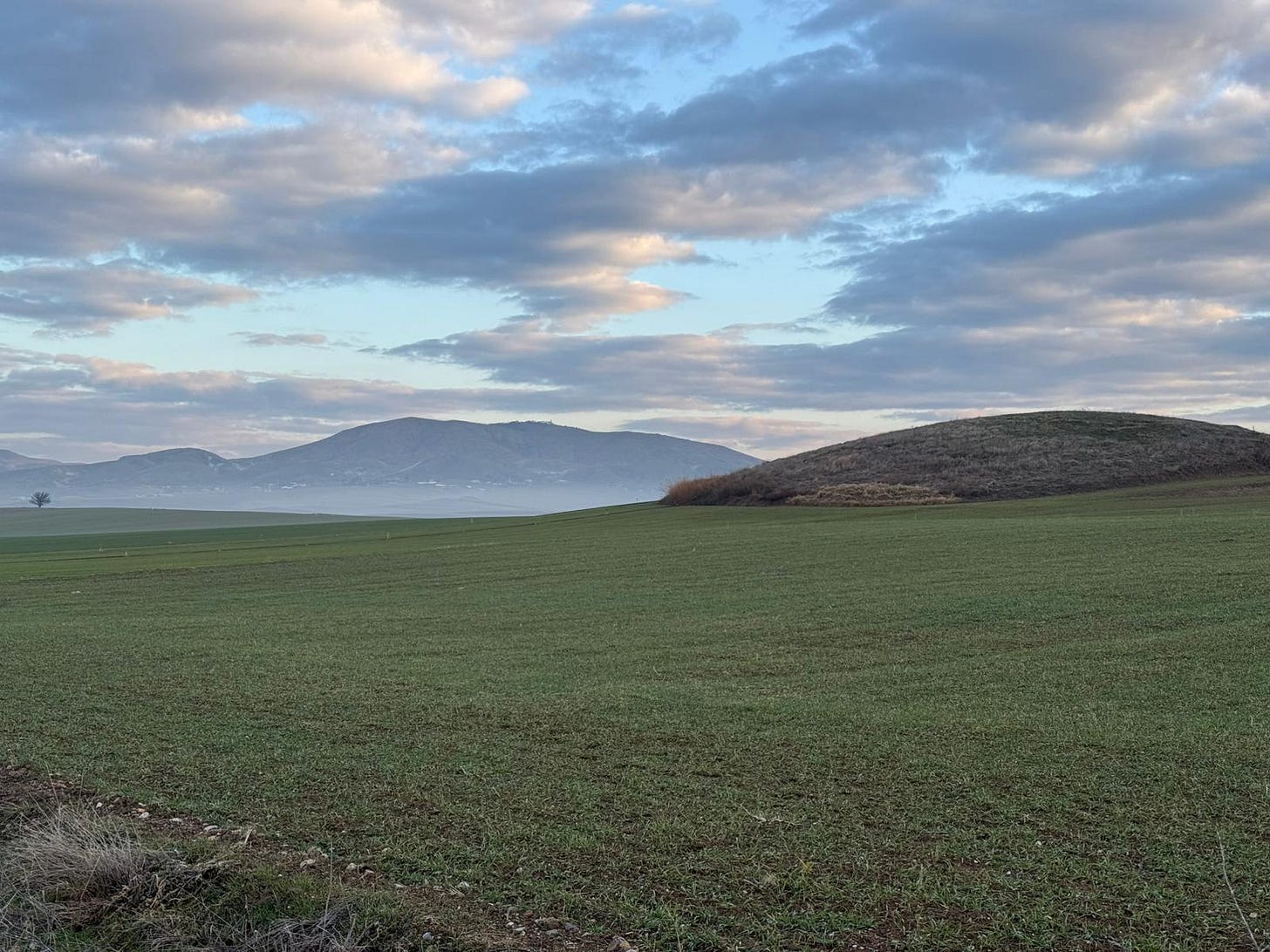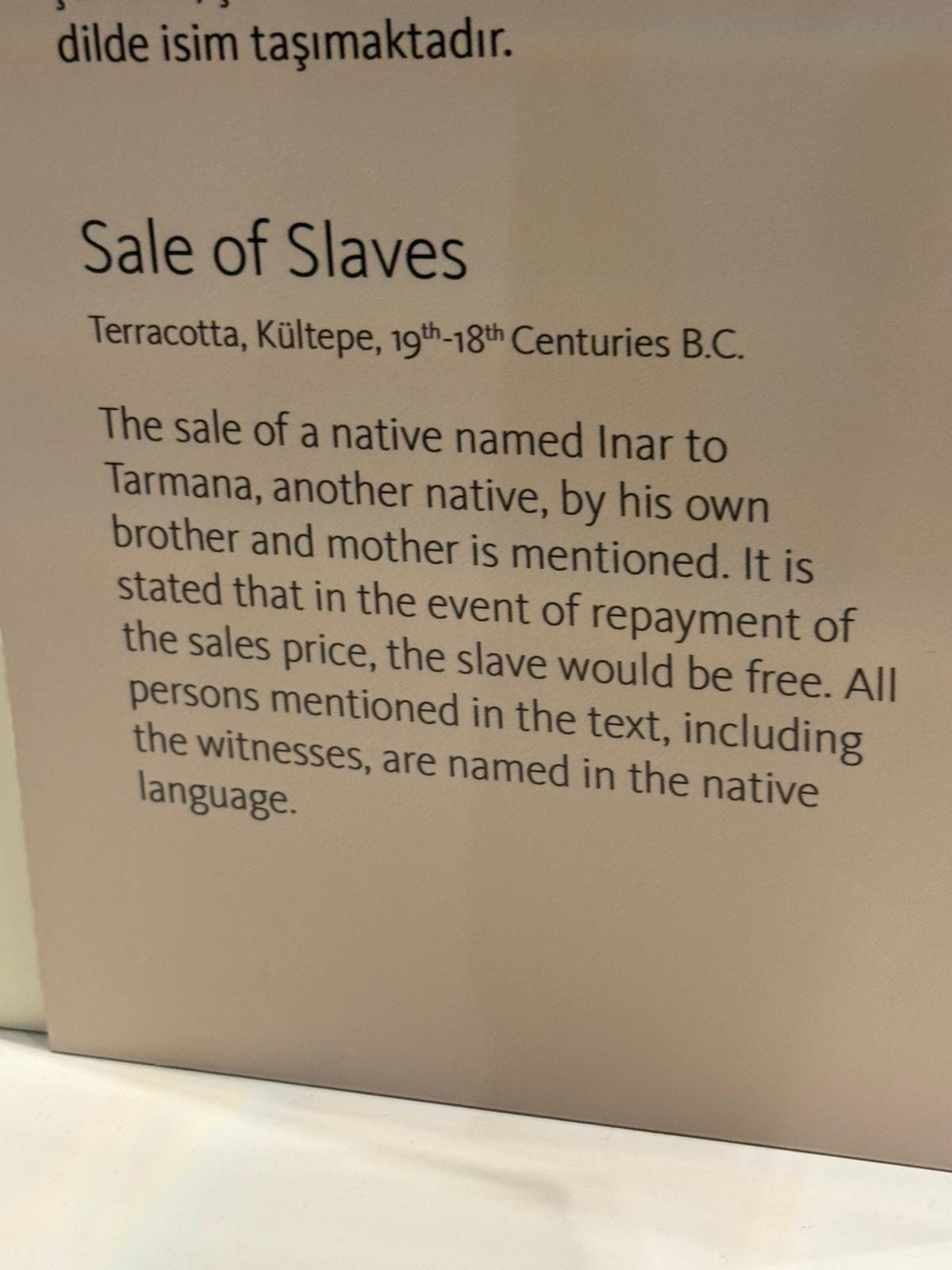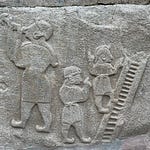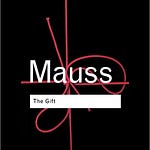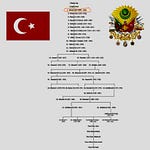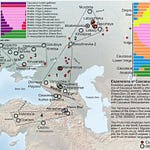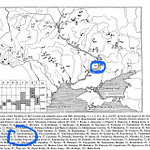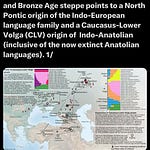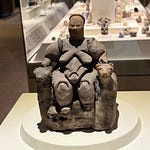Following in the footsteps of the Hittite emperors and empresses, Decoding Trolls makes a pilgrimage to Mount Ḫazzi on the Syria/Türkiye border. Decoding Trolls narrates his visit to Ḫazzi, or as it is written in the bible Mount Zephon (Saphon in Greek), the most sacred mountain in Hittite religion.
In Hurrian religion (some of which was adopted by the Indo-European Hittites and ancient Greeks) the mountain deities Namni and Ḫazzi served the storm God Teššub (the supreme deity in the Indo-European Hittite pantheon and equivalent to Zeus in the Indo-European Greek religion). Note the Dyeus sound and meaning immanent in the second element of Mount Kassios’s moniker - sios. Mount Kassios is, according to Apollodorus, the equivalent of Mount Ḫazzi in Ancient Greece.
The ‘zzi’ element in Ḫazzi may well also stem from the same Indo-European sound for ‘sky’ and deity we discussed before in the Death episode of the Finding Manuland podcast. For síus was the word and sound for deity in Hittite, the earliest attested Indo-European language, which, like all Indo-European languages, ultimately emanated from Ancient Ukraine, where Dyeus signified ‘Sky’ as in ‘Sky Father’ who would evolve into Iuppiter in Ancient Rome, Dyuh Pater in Ancient India, and of course Zeus Pater in Greece.
Death Episode: Finding Manuland Podcast
Deity, Death, day, *Tiwas (Germanic deity who gave their name to Tuesday),… all derive from the Ancient Ukrainian word for sky *Dyeus. That’s right: when you say someone is ‘dead',’ quite sweetly, you’re saying, ‘they’re in the sky.’
Here, is the statue of the storm deity Teššub which I photographed on a recent visit to Karatepe in Cilicia (Türkiye).
The Phoenician script written on this 8th century BCE depiction of Teššub was mirrored in an Indo-European Luwian hieroglyphic inscription found on the same site. This enabled scholars to crack the Luwian hieroglyphic code and in turn to decipher Hittite (an Indo-European language, similar to but distinct from Luwian. Hittite, however, adopted the same system of hieroglyphs from Luwian, which confused scholars quite a bit until they worked this out!).
Hi there, I'm Decoding Trolls. Behind you, Behind me, rather, you will see Mount Zephon, which features in the Bible. It was also, interestingly, most interesting for us, a shrine and a place of pilgrimage for the Hittites and for the Hittite gods. And we're going to head up to this mountain.
I don't know whether we're going to get there because it's very close to the border. It's a couple of kilometers from the border with Syria, and the army may well be there, so may not let us in, but we'll see if we get there.
Okay, so... So as I suspected, I didn't make it all the way up the Holy Mountain at around five kilometers from the summit. There is a checkpoint and some soldiers were there guarding it, which I suppose gives us the idea, the understanding that these places are still very structurally important.
So where I am is at the moment, looking down, you can see through the back behind me is the border with Syria and Turkey. And this is an interaction zone. It has always been an interaction zone between Indo-European and Semitic language speaking cultures. This is basically part of the Amanos Mountains. which divide Turkey from Syria.
And that's what really drew me here because of the MN in Amanos Mountains. And I will, I think, be coming back here quite a lot. Zephon, it's called in the Bible in Hebrew, is Ḫazzi. in Ugaric and for the Hittites. As I was driving along the Mediterranean coast today, I turned a corner and suddenly there was this shadow of the mountain. And so I can relate it to other holy mountains which I've gotten to know since I began Finding Manuland. There's Mount Meru in India, in Northern India, which is the holiest mountain in Hindu and in Buddhism. In Ireland, there's Croagh Patrick and the crew.
And we have Mount Elbrus, which sadly I don't think I'll ever get to visit because it's just over the border in Russia. But Mount Elbrus features a lot in Iranian, early Iranian mythology as the home and the place of the gods. And if you're traveling from ancient Ukraine, as the Yamnaya did along that route, you would... pass under the watchful eye, under the guardianship of Mount Elbrus.
I've talked before, particularly in the Eneduana, who was the priestess to the moon god Nanna, who lived around 2300 BCE. I talked before about the ziggurat, the Tower of Babel, which any of us listening to this from Christian traditions who grew up in a Christian tradition will understand what the Tower of Babel is.
Tower of Babel was a ziggurat where I studied at Oxford University has a ziggurat in... Saïd Business School, anyone who's been to Oxford, who's listening to this, who arrived at the railway station will see this ziggurat, which is an element in the design of the Saïd Business School.
Jeremy Dixon, the architect, incorporated it because of two influences. One was one of the Eight Wonders of the World at Halicarnassus. And also this church, St George's Church in Bloomsbury in London, has this amazing ziggurat design. And a ziggurat design is a bit like a pyramid. It is a pyramid, basically, but not like an Egyptian pyramid.
But it's the same idea where you have these steps going up to the top. And at the top of the ziggurat was the temple. That was where Eneduana would have made the sacrifices. It mimics the design of the mountains. And the idea of having the top of a mountain being where the deities live is somehow related.
And it's part of what I'm looking at and what started me off were the burial mounds in Eastern Ukraine, especially in the steppe, the flat steppe land of Eastern Ukraine. They're a human attempt to recreate a mountain a sacred place a sacred space patriarch of the community the king the monarch would be buried underneath in a pit grave when Greece occupied this area I’m in today this was known as Antioch back in the day this whole area and i was in the city of Antioch yesterday which is an amazing place we'll talk about it again.
And in Gordion and Gordios (note how once again we have the Dyeus sound in both Gor-dios and Mi-das’s (Gordios’s famously minted son) names), I had this experience, which I didn't really think I would get, which was to see the oldest burial mound in the whole of Anatolia.
So Anatolia is basically contiguous with modern Turkey. The Hittites were the first Indo-European empire, founded this city, which was called Gordion, where Alexander the Great came, which has these 200 burial mounds around it.
And that's where King Midas is from. And I also went to see the Midas Mound. which is actually built by King Midas for his father Gordius. And it's quite a spectacular mound and I've got great pictures of it. But what really interested me was this other mound, Mound W, which is the first mound where we have evidence of this burial tradition which began among the Yamnaya in ancient Ukraine.
Important for me personally to see it with my own eyes, the first example of Indo-European writing we have from this century, 1900 BCE to 1800 BCE.
And one of these texts has the MN sound in, his name is Tarmana. And Tarmana, who is described in the museum as an Anatolian, which means Indo-European. Tarmana is making a deal to buy a slave. Anatolian as an Indo-European language speaking member. and his name is Tarmana, so it was great to have that MN sound in Tarmana because if my idea, if my hypothesis that the MN sound is the fundamental cryptotypic semantic signaling system in Indo-European communities from Ireland to India over 6,000 years, from 4,100 BCE until today, and this is the central conceit, the central organizing focus for Finding Maniland, then to find evidence of MN in the first documents, the first written evidence we have of the existence of Indo-European languages in these Hittite documents was more than I hoped for.
The consensus among scholars, Indo-European scholars today, is that the community of Yamnaya, who left ancient Ukraine around 4100 BCE, it is the language they brought with them from ancient Ukraine, which eventually, two millennia later, would become attested in Hittite, language that Tarmana spoke. I just wanted us to mark this and to say, look, we're on a holy mountain here. I feel very lucky to be here.
And thank you for being with me on this journey, which is only beginning. Small sum every month. You know, I love you. You're amazing. Thank you. You make this possible. You actually make this possible. And your manner, your energy is in this. But those who just simply subscribe and who receive my emails once a week or however often I can do it, you too, you're amazing. And thank you for making this possible. And you're in my mind everywhere where I'm traveling. I'm going to leave it at that for today because it is quite cold.
Continued:
Why it’s wrong to platform Russian scientists - Episode XXXV
Two of the most important papers since William Jones announced the discovery of Indo-European languages were published this week.
Continued from:
Ten Reasons Why Finding Manuland Matters - Vol. 1 - Episode XXXIII
Today, we’re looking at how the Finding Manuland iterative method of discovery works. And, we look at the first two of ten reasons why Finding Manuland matters.
First in series:
Finding Manuland I
In October 2021 I was returning from my final vacation before my forced retirement from my beloved diplomatic posting to Ukraine.


